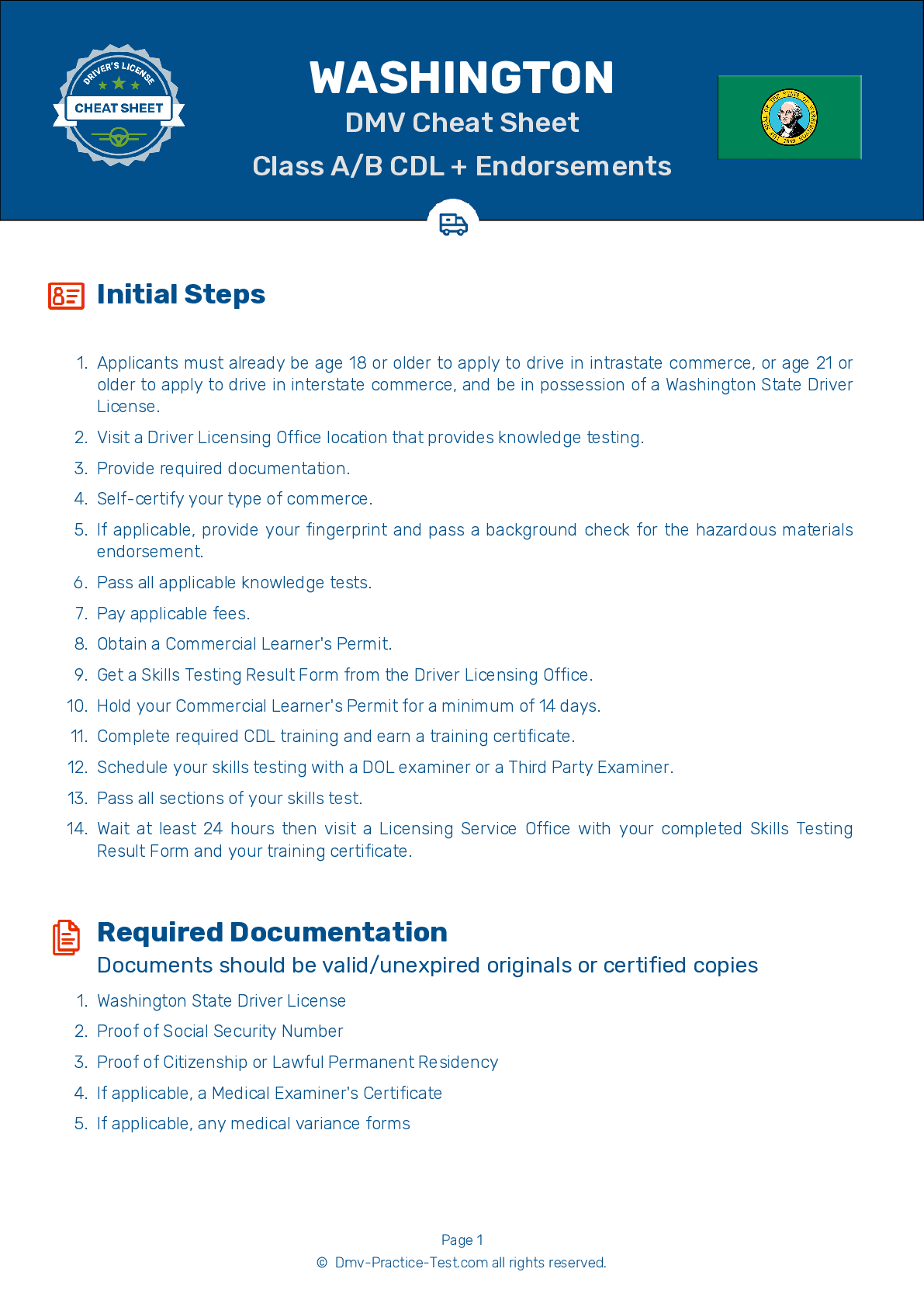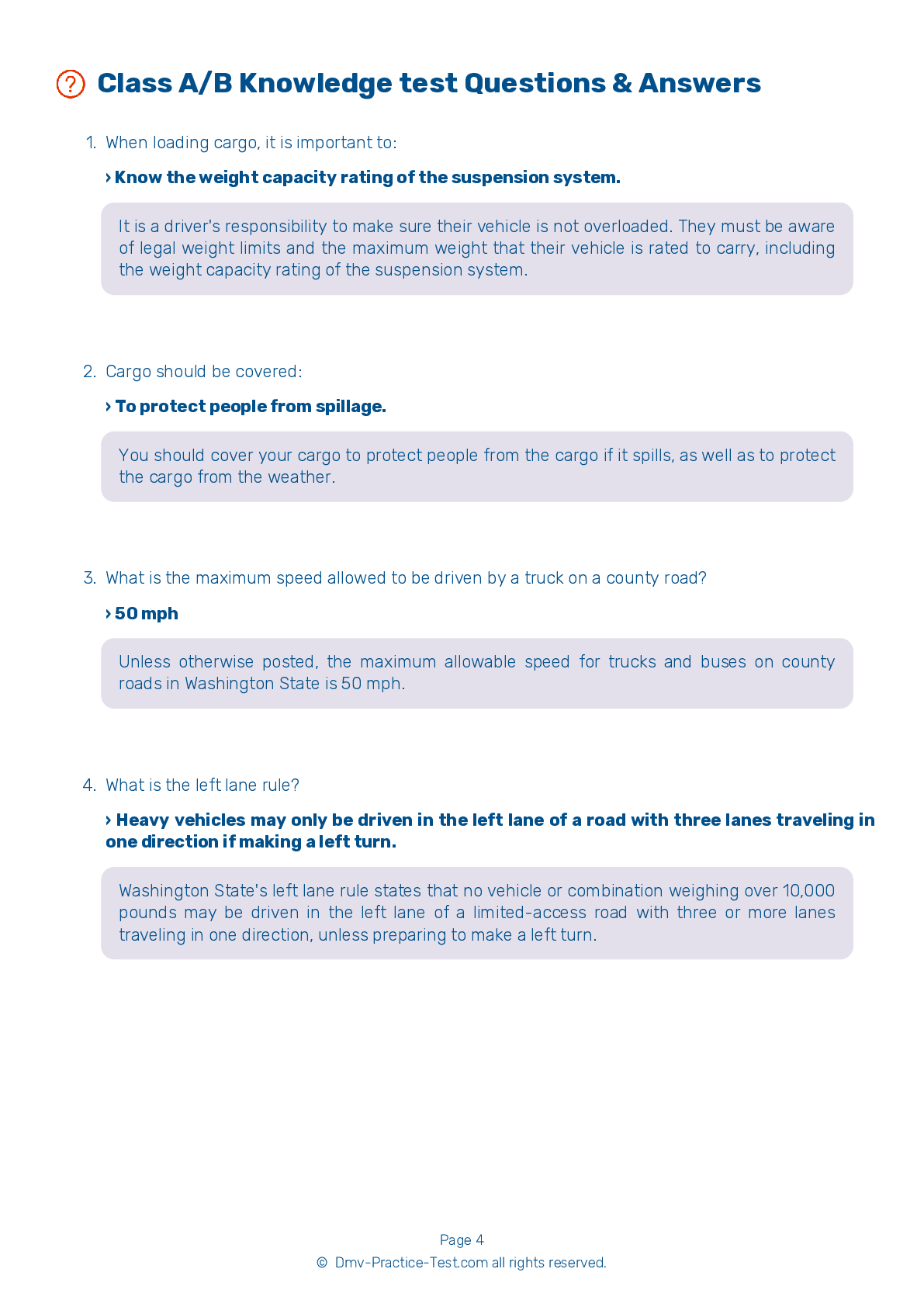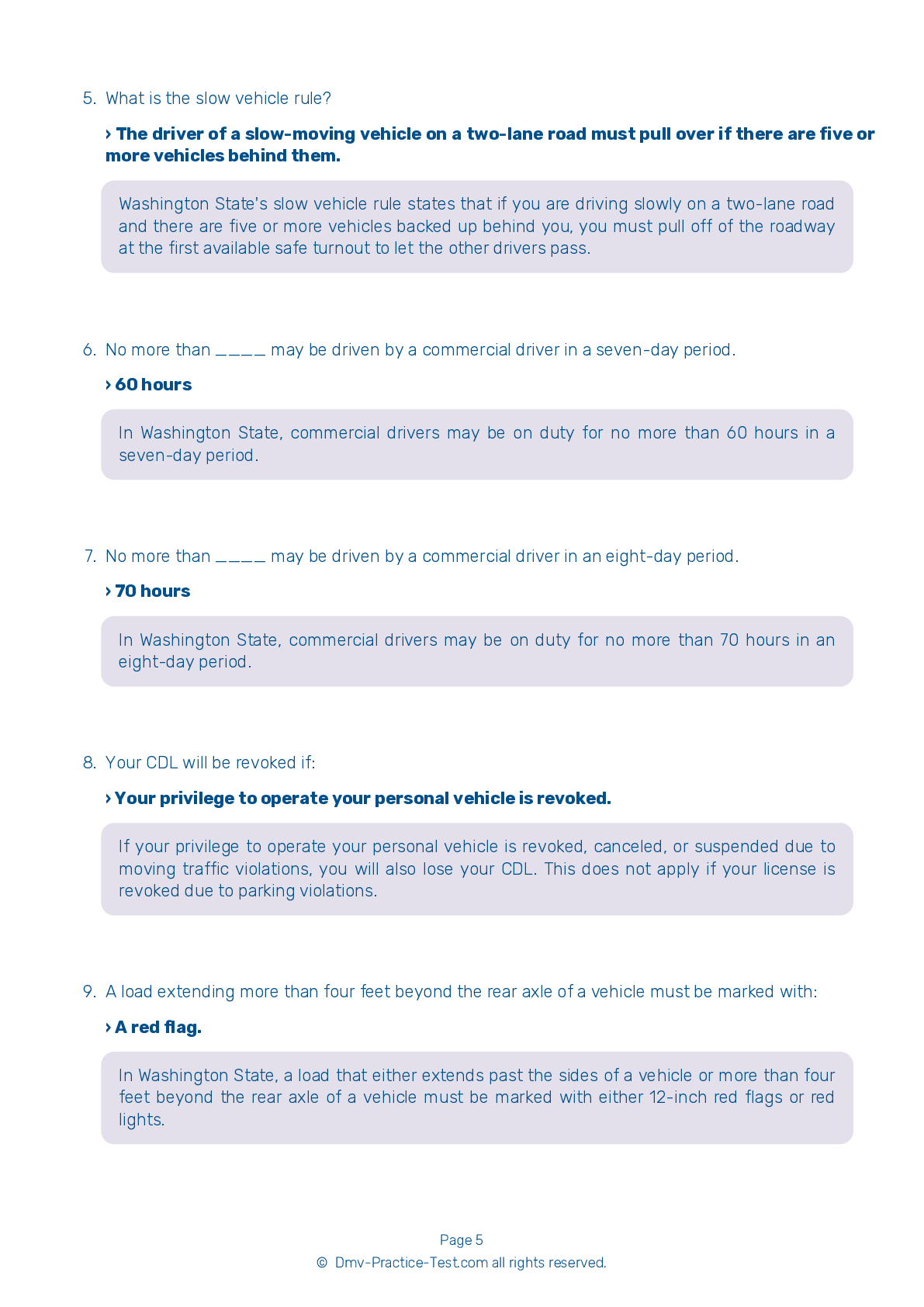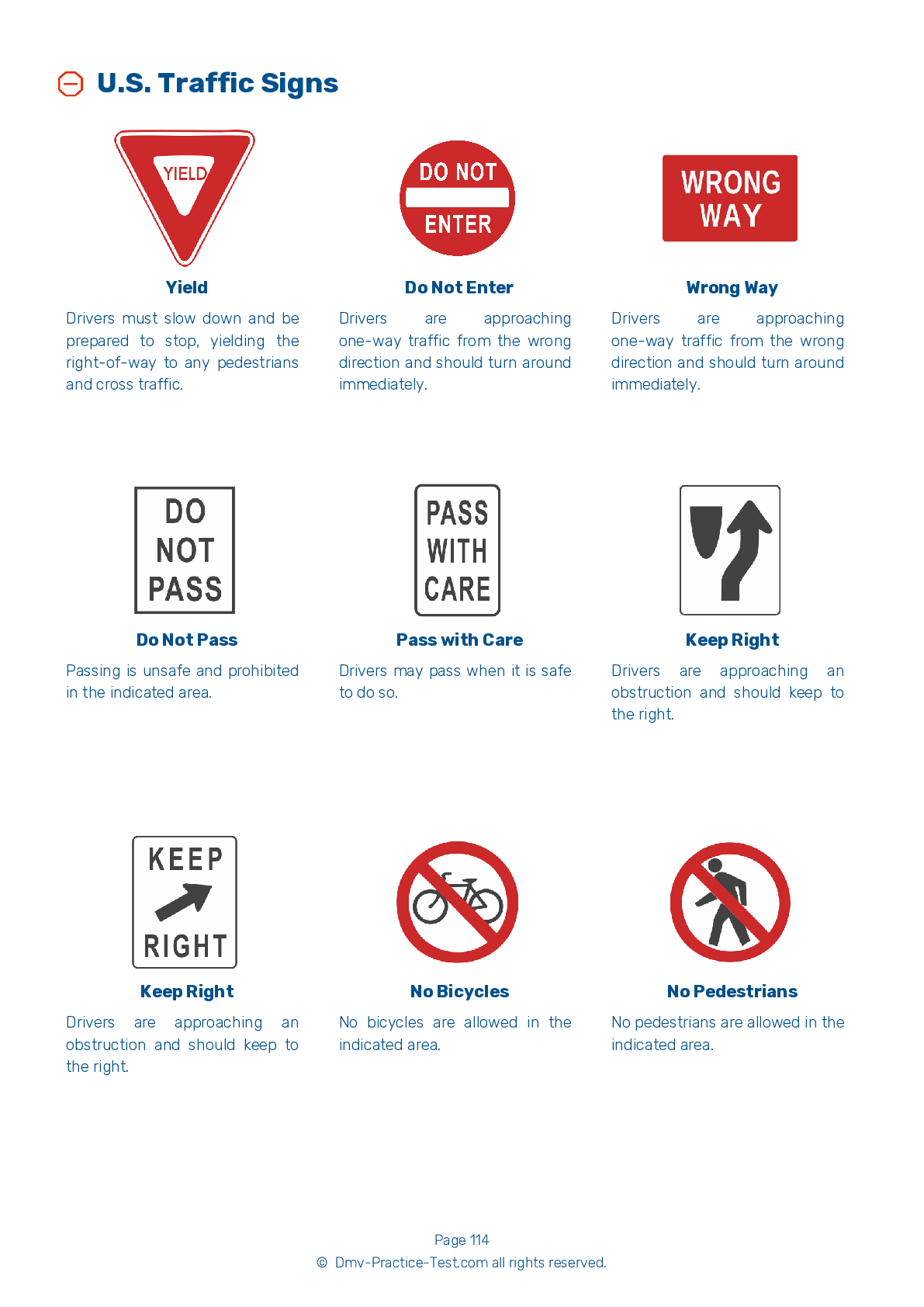Air Brakes #1
Air Brakes Endorsement Test | Washington 2025 #1 Page 4 of 4
Train for FREE online with our Washington CDL air brake test. The official exam test consists of several obligatory parts, with all of them checking your knowledge of different blocks of road rules. If you need to obtain a WA Class A/Class B driver license in 2025, practice as much as possible. Free sample tests published on our website will help you check and improve your knowledge and boost your grades. Please bear in mind that the requirements for CDL may vary from state to state.
25
20
20
19 . If air pressure drops to a level between ____, a visual low pressure warning signal should have already activated.
A visual low pressure warning signal should activate before air pressure drops to a level between 55 and 75 psi. This signal could be a light, a buzzer, or a wig wag.
20 . A low air pressure warning signal should activate:
In an air brake system, a low air pressure warning signal must come on if air pressure in the tanks falls below 60 psi. This warning signal may come in the form of a light, a buzzer, or a wig wag.
21 . A safety valve is set to open at ____ pounds per square inch (psi).
The safety valve protects air tanks and the rest of an air brake system from accumulating too much air pressure. The safety valve is usually set to open at 150 psi.
22 . Which of the following is not part of a vehicle’s air brake system?
Components of an air brake system include an air compressor, an air compressor governor, air storage tanks, air tank drains, an alcohol evaporator, a safety valve, a brake pedal, foundation brakes, supply pressure gauges, an application pressure gauge, a low air pressure warning signal, a stop light switch, a front brake limiting valve (on some older vehicles), spring brakes, and parking brake controls.
23 . Air pressure should build up in a single air system within:
In single air systems, air pressure should build from approximately 50 to 90 psi within three minutes.
24 . When traveling down a steep downgrade:
On long and/or steep downgrades, you should primarily use engine braking to control the speed of your vehicle. Use your brakes only as a supplement to this effect.
25 . Once the air tanks are at an air pressure level of 125 psi, the air compressor governor will:
An air compressor governor will stop the compressor from pumping air once the air tanks are at an air pressure level around 125 psi. This air pressure level is referred to as the "cut-out" level.
Search the best driving school in your neighbourhood
2025 Washington | Frequently Asked Questions
A CDL Class A license in Washington is defined as a commercial driver's license that allows the holder to operate any combination of vehicles with a Gross Vehicle Weight Rating (GVWR) of 26,001 pounds or more, given that the GVWR of the vehicle(s) being towed is in excess of 10,000 pounds.
A Class A Commercial Driver's License (CDL) in Washington allows the holder to operate any combination of vehicles with a Gross Vehicle Weight Rating (GVWR) of 26,001 pounds or more, provided the GVWR of the vehicle(s) being towed exceeds 10,000 pounds. This includes but is not limited to tractor-trailers, truck and trailer combinations, and tank vehicles.
To obtain a Class A CDL license in Washington, you must be at least 18 years old (21 for interstate driving), possess a valid Washington state driver's license, pass a vision test, and pass knowledge and skills tests. You'll also need to provide proof of U.S. citizenship or lawful permanent residency, and meet medical requirements.
In Washington, you must be at least 18 years old to qualify for a Class A Commercial Driver's License (CDL) for intrastate driving (within Washington only). However, federal regulations require drivers to be at least 21 years old to drive a commercial vehicle interstate (across state lines) or to haul hazardous materials.
While not always required, specific endorsements may be necessary for a Class A CDL license depending on the type of vehicle you'll operate or cargo you'll carry. These can include endorsements for double/triple trailers, tanker vehicles, passenger vehicles, or hazardous materials. Each endorsement requires additional knowledge tests and sometimes a skills test.
The Class A CDL skills test in Washington encompasses three parts: the pre-trip inspection, basic vehicle controls, and on-road driving. The pre-trip inspection checks your ability to assess your vehicle's safety. Basic vehicle controls assess your ability to maneuver and control the vehicle. The on-road driving test evaluates your driving skills in various traffic situations.
Yes, Class A CDL license holders in Washington may face limitations based on their specific endorsements and restrictions. For instance, without the proper endorsements, they cannot operate vehicles with air brakes, transport passengers, or haul hazardous materials. Additionally, restrictions may be placed on licenses due to medical conditions or lack of skills.
Yes, it is possible to take the written Class A CDL test in languages other than English in Washington. The Department of Licensing offers the test in several languages. However, federal regulations require anyone applying for a commercial driver license (CDL) to understand and read English to ensure safety on the roads.
Yes, you can request accommodations for the Class A CDL written test if you have a disability. Washington's Department of Licensing is committed to providing equal access to its services. If you have special needs, contact your local driver licensing office to discuss your situation and determine what accommodations can be made.
If you don't pass the Class A CDL written test in Washington, you can retake it. However, you must wait at least one day before retaking the test. Keep in mind that there may be additional fees for each attempt. It's advisable to study thoroughly before retaking the test to increase your chances of passing.




